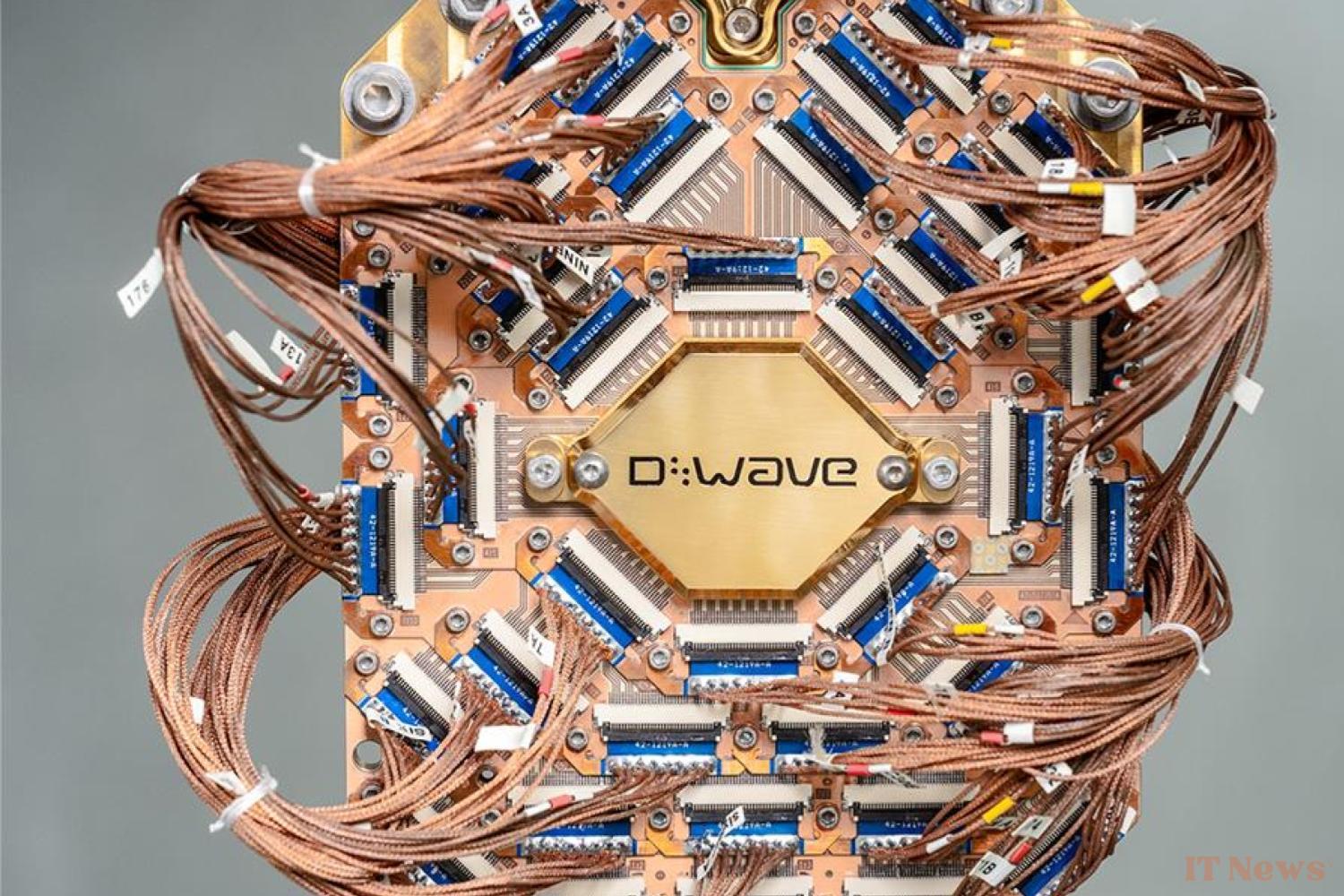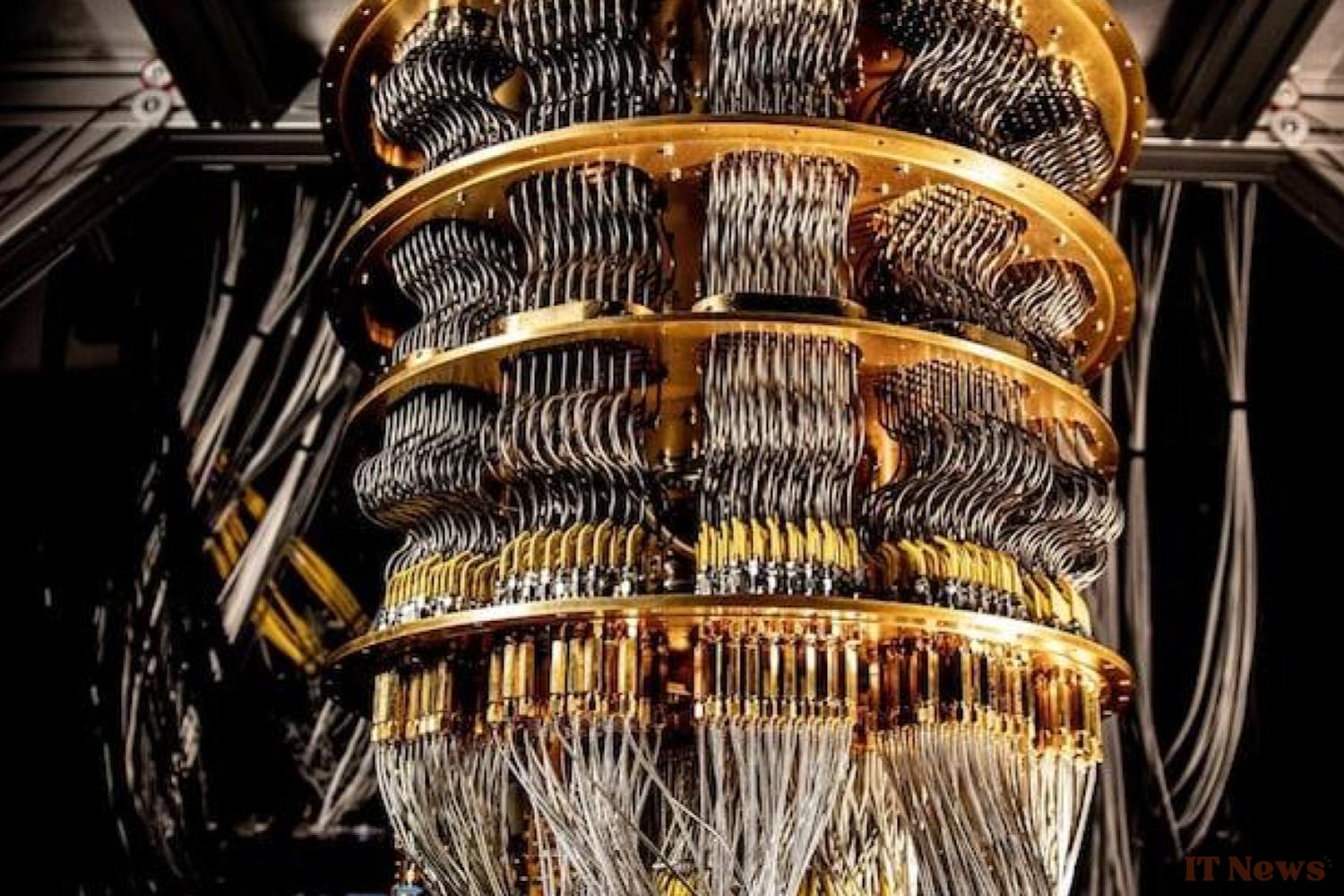D-Wave, a quantum computing company with a winding and sometimes controversial history, has just claimed to have reached a critical milestone that could well propel this technology into a new dimension. In a paper published in the prestigious journal Science, it claims to have reached the famous "quantum supremacy," a tipping point at which quantum computers are capable of solving complex problems more efficiently than traditional computers.
D-Wave was one of the first private companies to tackle the quantum computing niche, more than 25 years ago. The results of its work have long been rather mixed. But a few years ago, it began to take a radically different path from most of the industry's big guns.
Another approach to quantum computing
Conventional quantum computers, such as those developed by Google Quantum or IBM, to name a few, share a common characteristic with generic PCs: they are based on the concept of logic gates, the basic building blocks of logic circuits that allow operations to be performed.
Obviously, classical and quantum logic gates do not operate in the same way. But functionally speaking, they play the same role. On paper, a gate-based quantum computer can therefore run any traditional computing algorithm—although this would obviously be a waste, since their whole point lies in their ability to exploit specialized algorithms like those of Shor or Grover, which exploit superposition or quantum entanglement to accelerate the search for solutions.
D-Wave, on the other hand, has moved away from this relatively general approach to quantum annealing. This is a fundamentally different way of operating than the quantum computers developed by Google and others.
Unlike gated quantum computers, such QACs (for Quantum Annealing Computers) are not capable of interpreting any series of instructions. These are highly specialized machines whose objective is to search for the lowest energy configuration of a system, which is equivalent to finding the optimal solution to a very specific problem. This is a notoriously difficult exercise, even impossible in some cases with traditional computing.
To illustrate this, you can visualize the different solutions to a problem as a chain of mountains and valleys, where the altitude represents the energy level of the system. The lowest points (the valley bottoms, in short) correspond to the lowest energy, and therefore to the solutions closest to optimality.
To find the optimal solution to a problem, you simply need to travel through these valleys until you reach the lowest point. But the neighboring mountain could also hide an even deeper valley, and therefore a more optimal solution. The problem is that climbing this mountain to test this hypothesis requires a lot of energy, and therefore a lot of computing power in this context. For the most complex problems, where the peaks are extremely high, conventional computers are simply unable to overcome these energy barriers. They therefore find themselves "stuck" in a local area, without being able to verify whether they have truly found the most optimal solution possible. At best, we can therefore only hope for an excellent approximation of the solution.
To find a truly optimal solution, quantum annealing computers exploit the quantum tunneling effect. This phenomenon allows particles to cross insurmountable energy barriers in traditional physics. This effect is notably used in cutting-edge microscopes, known as tunneling microscopes.
In the case of our quantum annealing computer, the tunneling effect allows us to pass directly through these peaks without having to expend a lot of energy to climb them, in order to explore several valleys simultaneously. We therefore obtain a solution that is much, much more likely to be truly optimal than with a gated quantum computer.
Impressive experimental success
D-Wave claims that this development work has finally paid off. In their research paper, the company explains that they have built a quantum annealing processor specifically designed to simulate the changing properties of a spin glass.
This term refers to a family of magnetic materials where the spin (a quantum property of matter) of the atoms is randomly arranged. This creates a situation where some spins seek to align while others absolutely want to be in opposition. There is therefore no stable arrangement that meets the expectations of all the atoms, and the result is a relatively chaotic system in constant evolution.
Traditionally, it has been extremely difficult to simulate the behavior of these constituents. So difficult, in fact, that it would take a supercomputer practically infinite time to perform such modeling. A regrettable fact, given that these materials have many very interesting applications — notably in the field of semiconductors.
D-Wave, on the other hand, claims that its ultra-specialized quantum annealing processor allowed it to directly model the material's behavior, without being limited by the approximations inherent in traditional techniques (see above)… in a matter of minutes. It therefore claims the "first demonstration of quantum supremacy on a concrete real-world problem."
Quantum supremacy, really?
This last claim, however, should be taken with a grain of salt. As a reminder, this is not the first time that a company has claimed quantum supremacy, and one should always be wary; It's a fancy term that's often used for communication purposes to promote promising work. We remember, for example, Google, which claimed to have achieved quantum supremacy in 2019 with its Sycamore processor (see this study).
Even though the two firms' technologies are fundamentally different, what's important is that this claim crumbled fairly quickly. Indeed, other researchers eventually reproduced these results without a quantum computer, simply by optimizing conventional computing techniques. It's entirely possible that D-Wave's work will follow the same trajectory in a few years.
Until proven otherwise, we can therefore legitimately consider that D-Wave's study will not lead to an immediate revolution in quantum computing. Whatever the company says, we will probably have to wait a while longer before achieving true quantum supremacy, the kind that will allow us to solve a myriad of real-world problems that are completely unattainable with today's computers.
But that doesn't mean that this work deserves to be dismissed out of hand either. To begin with, this is a great experimental success with very concrete repercussions in fundamental physics and materials science.
Furthermore, this study also has the merit of showing the value of exploring different approaches, outside of what the industry giants are doing. In the best case scenario, this approach will allow us to eliminate sterile avenues. And ideally, it will bring us a little closer to the moment when this formidable technology will truly gain momentum and revolutionize computing as we know it today.
Check back in a few years (or, more likely, decades) to see if this paper will go down in history, or if it will be just a rather anecdotal milestone on the long road to quantum supremacy.
The text of the study is available here.




0 Comments